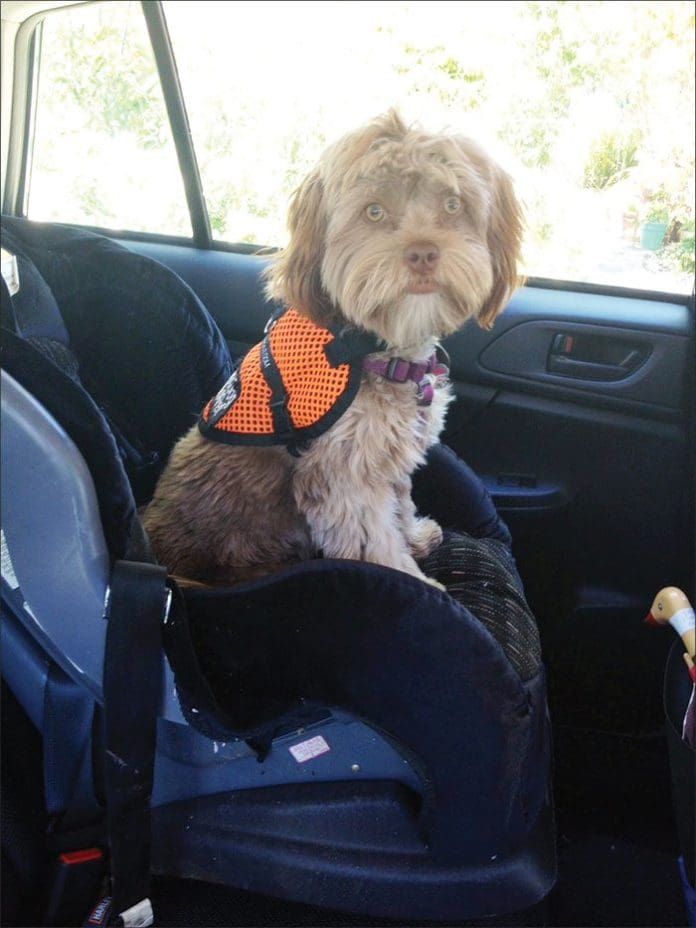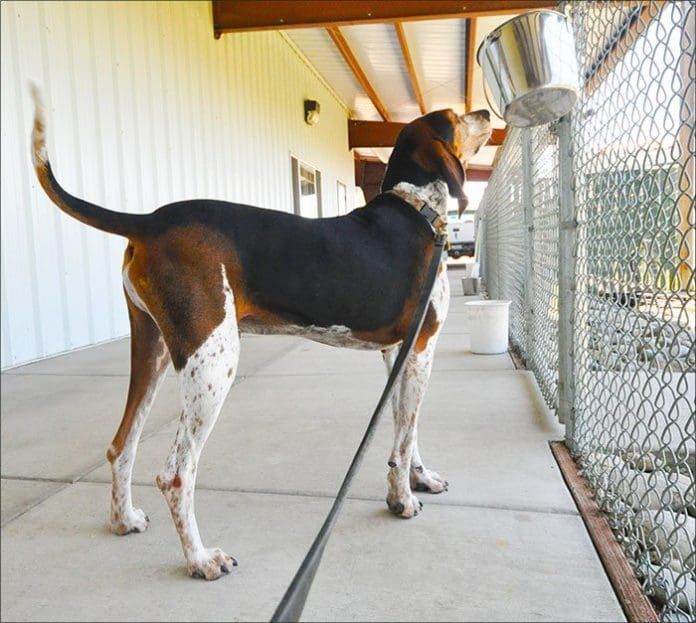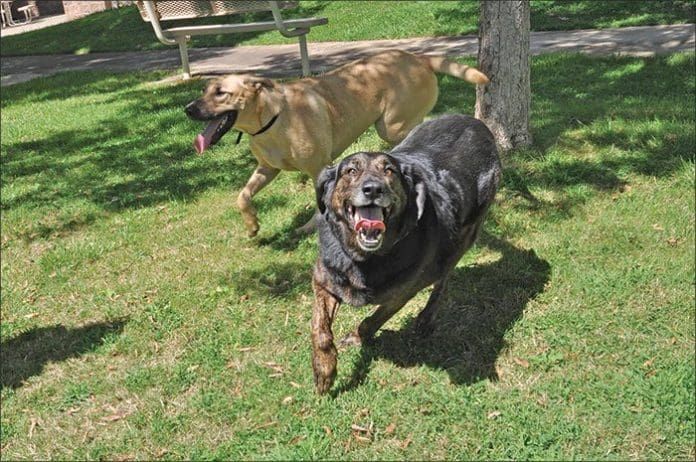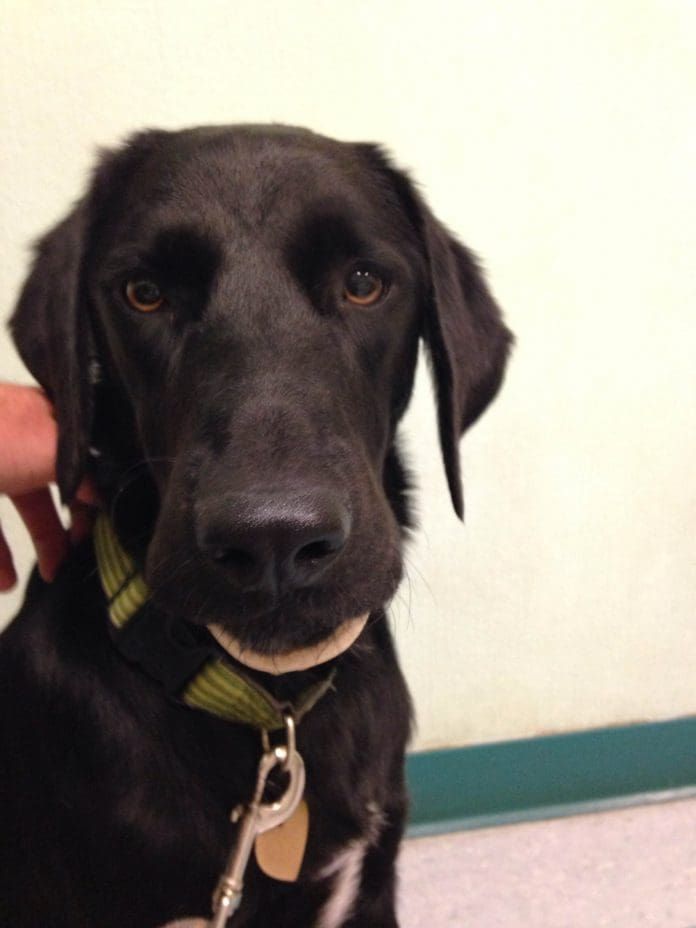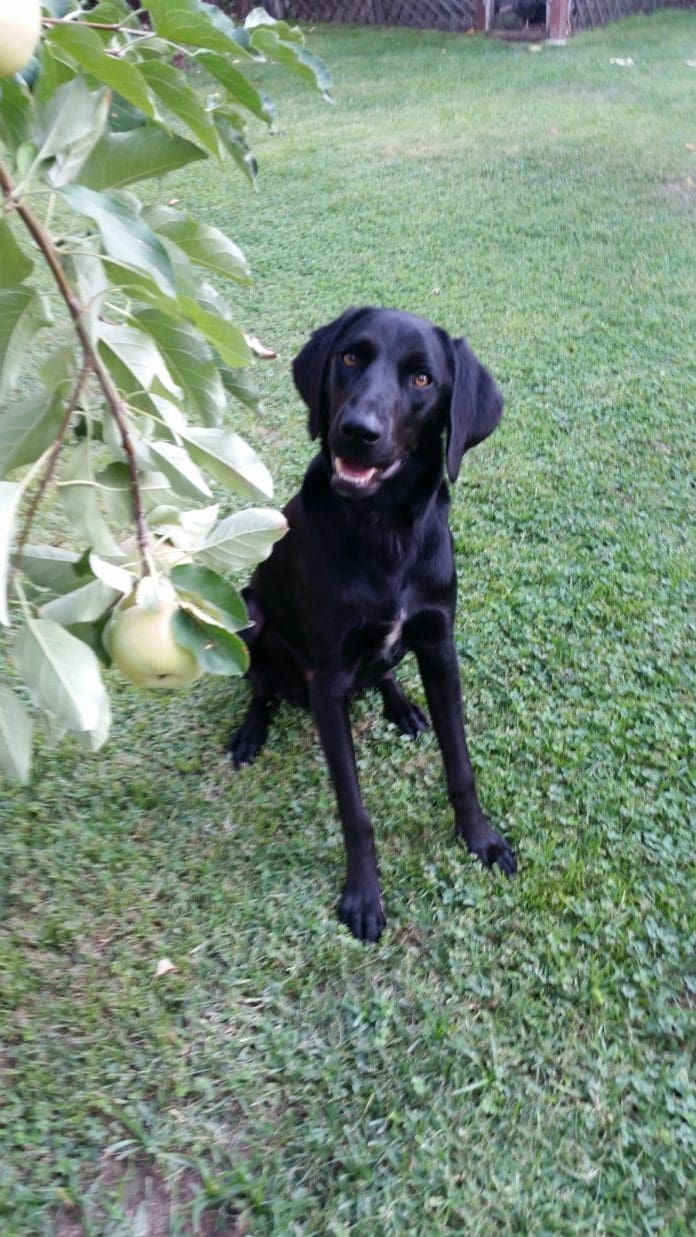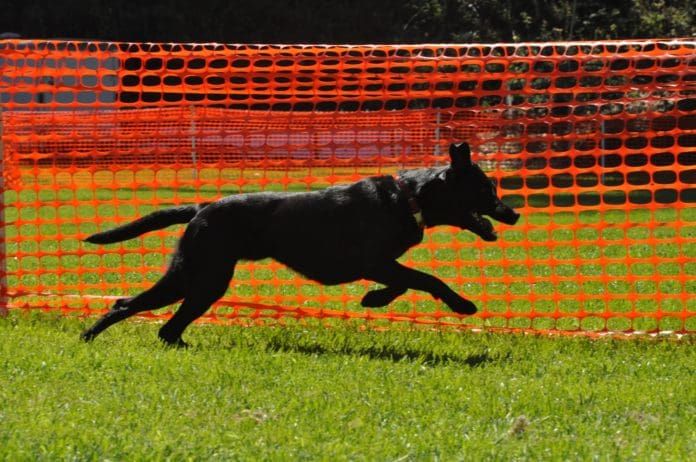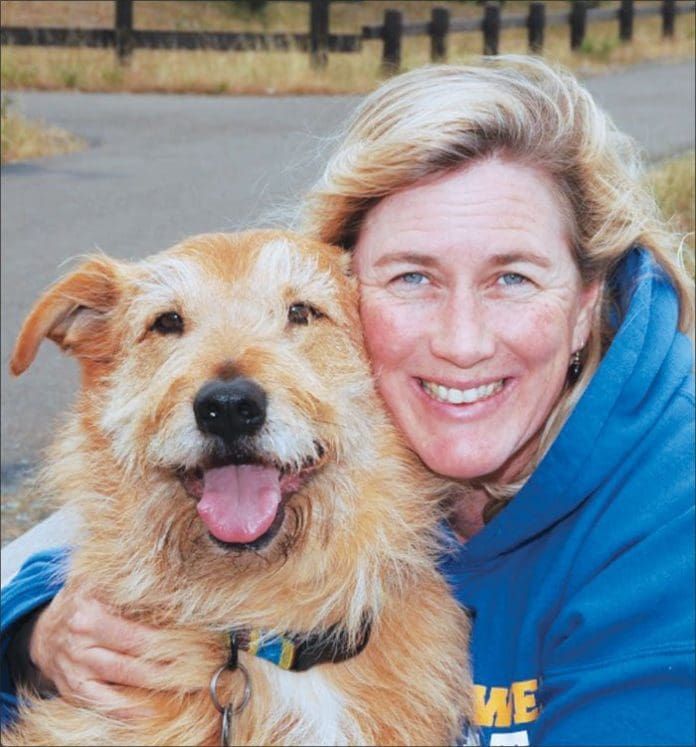Meet Lulu. Lulu is a Havanese-mix puppy, just about a year old. In many ways she is a typical adolescent pup: outgoing, social, and full of enthusiasm for life. But there is something special about Lulu. She is in training to be a service dog. When Lulu is fully trained, she will be a hearing-alert dog for her human companion, Sara Walsh.

Lulu had a humble beginning. She was found in the San Francisco Bay Area, lost or dumped, and taken to a nearby shelter. A savvy rescuer met Lulu at the shelter and felt this 12-week-old pup had a special quality about her. The rescuer took Lulu home and began having her assessed for service-dog potential. I was asked to do an initial evaluation, and then Lulu traveled to service-dog trainer Rita Martinez of Clickin’ Canines in Oakley, California, for a full evaluation. Martinez also saw something special in the little pup. Lulu was curious, resilient, adaptable, and able to to calm herself when excited, all of which made her a good candidate for a future hearing-dog career.
Serendipitously, Sara Walsh had just begun researching the possibility of getting and training a hearing-dog companion. Walsh had been referred to Martinez to learn more, and she called the trainer to get more information. During that initial conversation, Martinez told Walsh about a puppy in foster care who had some potential. Walsh knew she would like a compact dog who could travel easily, and she thought a dog with hair rather than fur might be a good idea. Bichons and Havanese were on her radar screen. But a puppy was not.
“I really wasn’t sure about getting a puppy,” said Walsh, who had always had dogs and enjoyed training, but thought a very young pup might be too much. But when Martinez mentioned that Lulu was in Felton, California, just a short distance from Walsh’s home, she decided that it might be more than just a coincidence, and went to meet Lulu. Then about 16 weeks old, Lulu was charming and cheerful, and quickly won over Walsh, who jumped at the opportunity to adopt the young pup. “Lulu came home and settled in right away,” Walsh says, noting that the adjustment was a much bigger deal for her than it was for Lulu.
Walsh, who is deaf in one ear and has only limited hearing in the other, knew that starting with a puppy would not guarantee a hearing dog in the end. She understood there was no way to know for sure if Lulu would be happy in the role, but she felt that it would be worth trying and committed herself to Lulu and to the process. At the very least, a dog would give her life structure, encourage her to take walks, and give her a good friend. At best, she would also have a wonderful partner who could alert her to sounds and help her be safer.
Thus began Lulu’s official journey.
Early puppyhood
Lulu’s early days looked a lot like most other puppies’ days. Lulu was prone to biting, peeing in the house, and chewing on things she shouldn’t. She needed to learn bite inhibition. She needed to be housetrained and taught to trade items. She needed to be conditioned to handling and grooming. Her training had to include resource-guarding prevention, home-alone practice, and all of the other basic good-manners behaviors that every pup should know.
Walsh and Lulu also began working on basic cues. Practicing behaviors such as sit, down, come, and settle politely are an everyday activity for Lulu and Walsh.
“Every morning, we start with training. She’s hungry and motivated. We go out and get the newspaper together and then in the front yard, driveway, and near the street we practice come, stay, and other regular life skills,” Walsh says. They then head into the house to continue training.
“Lulu loves the training,” Walsh says. “The attention, the treats. She gets a happy grin and her eyes sparkle!”
Socialization and more socialization
In Lulu’s first year, socialization has been a key part of her preparation for life as a service dog. “The expectations for socialization are just not the same as for other dogs,” Walsh says, noting that many times dogs stay home or in the backyard a good portion of the day and then go out for walks. They of course need to be socialized to the areas they walk and the people and animals they encounter. But Lulu would also need to learn about restaurants, museums, art shows, shopping centers, elevators, and public transportation.
Lulu would need to be comfortable with sounds, scents, and sights. She would need to learn about all aspects of human life, as well as the normal aspects of dog life. From the time she adopted Lulu, Walsh began taking her everywhere. “I was socializing her for our life together.”

Socialization is more than just providing exposure. It means carefully creating positive experiences. For Lulu, who is a very friendly dog, just getting to meet and greet new people and animals created that positive experience in most cases. Walsh also would bring out treats to help create good associations.
Walsh visited friends who graciously allowed Lulu to come inside and experience their homes and gardens. Walsh also made sure Lulu had fun experiences with children, and Walsh took Lulu to a farm where she met many animals, and made friends with one very cute lamb. She lined up doggy play dates so that Lulu would continue to be comfortable around other dogs (and so that Lulu would get to play and have a normal puppyhood).
Along with general socialization, Walsh also worked toward specific socialization goals. For example, Walsh knew that Lulu would need to be comfortable on airplane trips for visiting family and for traveling. They took rides on shuttle buses so that Lulu could experience movement and tight, crowded spaces. They went on elevators so Lulu could experience the weightless sensation of airplane takeoffs and landings. Walsh even mocked up a metal-topped table and a wand-like object to simulate the experience of going through airport security.
A few of the things Walsh learned about Lulu in this process was how adaptable she is. Lulu is naturally calm around pretty much everything new and different. She is interested and confident. She can also settle and sleep in new places.
Everything did not come easily, however. Lulu went through a brief period where she was afraid in the car. Like most pups, during certain developmental phases she would focus on everything around her, but had trouble orienting to Walsh. But the challenges have been manageable, and together they worked through many of those early trouble spots. As Lulu grew a little older and into adolescence, not only did she continue to have experiences that fed her social needs, she also began learning about not interacting with everyone, everywhere. Lulu has begun to understand that when she is wearing a vest, she needs to curb her social-butterfly ways and stay focused on Walsh.
Public-access training
Public-access training is the part of being a service animal that is often the toughest for the dog. The key for Lulu is the vest. The very clear signal of putting on the vest helps Lulu understand what the expectations are in the moment. And when the vest comes off she knows she can socialize and play.

To pass a public-access test, Lulu will also need some very specific skills not related to her hearing-alert tasks. As a service dog, she will be tested on her ability to wait to be invited in or out of a car. She will need to be able to walk calmly on a loose leash through parking lots, busy sidewalks, and all sorts of buildings. She will need to navigate crowds and public areas while within a foot of Walsh, adjusting her speed as Walsh does. She will have to demonstrate that she can come when called as well as sit, down, and stay until released. Lulu will have to accept friendly adults and children and be able to remain disengaged from other dogs. She must also be calm around startling noises or activities and settle under a chair or table in a restaurant. And she must be able to leave food alone even when in reach. Whew!
Lulu is already an expert in some of these areas, but Walsh and Lulu will need to continue prepping until they have the skill set down pat.
Hearing-dog basics
Basic training, socialization, and public-access skills have consumed a lot of Walsh’s time and Lulu’s energy during her first year. But from a very early age, Lulu also learned an alert signal.
Hearing dogs need a way to tell or “alert” their people when an alarm buzzes, a doorbell chimes, or a phone rings. In Lulu’s case, her alert signal is to jump up and tap Walsh’s leg with her paws. This was first taught as a simple trick. When cued, Lulu would jump up and tap, tap, tap. Walsh would click and treat. It was a fun game for both.
Once Lulu understood the tapping behavior as a trick, Walsh began adding sounds as cues for the tapping behavior. Working under the guidance of Martinez, Walsh sets up training sessions where a variety of timers with different buzzers and bells will ring at random times. Initially, when a timer went off, Walsh cued Lulu to tap. Fairly quickly, Lulu began to recognize that the bell or buzz meant “tap” and Lulu began alerting on the sound of a bell, without Walsh’s verbal cue.
Walsh is also working with Lulu to locate where the sound came from and take Walsh to that spot. In this manner, Lulu will be able to not only tell Walsh when a specific sound occurs, but also show her what is making the sound. For example, when a doorbell chimes, Lulu will run to Walsh, tap her leg, and then show her the sound came from the doorbell.
Finding the Balance
Walsh is very clear about how important it is for both her and Lulu to find a balance between all of this training and just living their lives. “Training is happening all the time,” Walsh says, even when they are not working on specific skills. Walsh notes that being with Lulu is a constant responsibility and at times she finds herself exhausted from trying to do a good job. She has learned that support is the key and along with working with her trainers, she also has a training partner and great support from friends.
Walsh is dedicated to making sure Lulu has positive experiences in the world and that Lulu continues to enjoy the training process. In so many ways, Lulu’s first year has been similar to other puppies’. She spends time regularly with her best dog friend, runs on the beach, and has plenty of opportunity to play and be a dog. And while the heavy focus on socialization and training may be taxing for some puppies, it is obvious Lulu loves it. Lulu enjoys going places, is comfortable socially, and really likes practicing her skills. It is clear when you meet Lulu that she has enjoyed her first year as a hearing-alert puppy in training, and will do well at the next steps.
Writer and trainer Mardi Richmond lives in Santa Cruz, CA, with her wife and a Cattle Dog-mix. She is the owner of Good Dog Santa Cruz, where she works with all sorts of puppies and young dogs. Mardi thanks Sara Walsh for sharing her and Lulu’s story.


